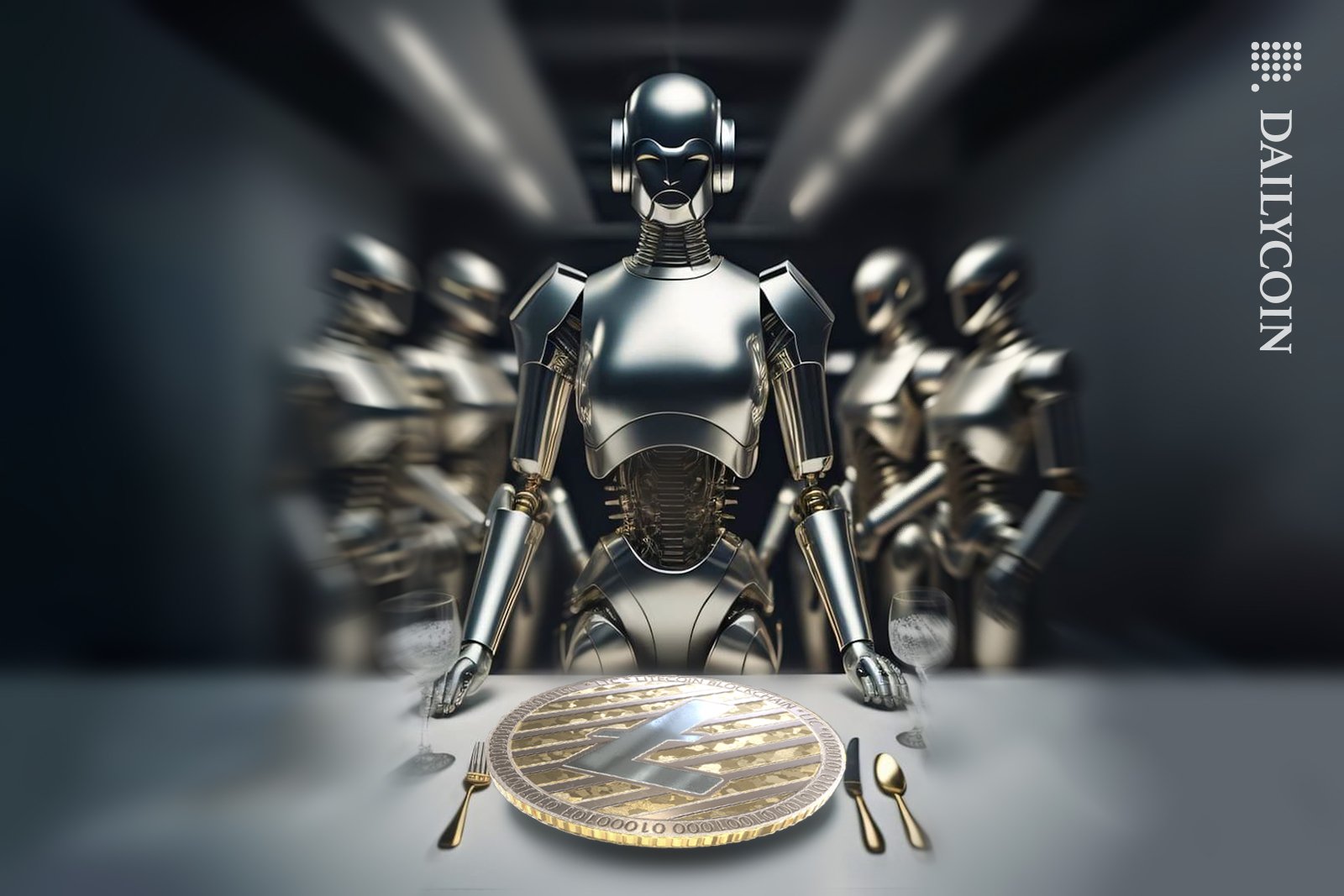Litecoin (LTC): The Silver to Bitcoin’s Gold

- Understanding Litecoin’s role in the cryptocurrency market
- Comparing the features of Litecoin and Bitcoin
- Exploring the history and development of Litecoin
- Analyzing the potential for Litecoin to become a mainstream digital currency
- Investing in Litecoin: Tips and strategies for success
- The future of Litecoin: Challenges and opportunities ahead
Understanding Litecoin’s role in the cryptocurrency market
Litecoin plays a crucial role in the cryptocurrency market as it is often referred to as the “silver to Bitcoin’s gold.” While Bitcoin is the most well-known and widely used cryptocurrency, Litecoin offers some distinct advantages that make it a valuable asset in its own right.
One of the key differences between Litecoin and Bitcoin is the speed of transactions. Litecoin transactions are confirmed much faster than Bitcoin transactions, making it a more efficient option for everyday use. This has led to Litecoin being used for smaller transactions, while Bitcoin is often seen as a store of value.
Another advantage of Litecoin is its mining algorithm. Litecoin uses a different algorithm than Bitcoin, which allows for more decentralized mining. This means that Litecoin is more accessible to individual miners, rather than large mining operations that dominate the Bitcoin network.
Litecoin also has a larger total supply than Bitcoin, with four times as many coins set to be mined. This can make Litecoin more appealing to some investors who are looking for a cryptocurrency with a higher supply.
Overall, Litecoin’s unique features and position in the market make it a valuable asset for those looking to diversify their cryptocurrency holdings. While Bitcoin may be the dominant player, Litecoin offers a different set of benefits that should not be overlooked.
Comparing the features of Litecoin and Bitcoin
When comparing the features of Litecoin and Bitcoin, it is important to note that both cryptocurrencies have their own unique characteristics that set them apart. While Bitcoin is often referred to as the “gold standard” of cryptocurrencies, Litecoin is often seen as the “silver” alternative.
One key difference between Litecoin and Bitcoin is the speed of transactions. Litecoin transactions are typically faster than Bitcoin transactions, with a faster block generation time of 2.5 minutes compared to Bitcoin’s 10 minutes. This means that Litecoin transactions can be confirmed more quickly, making it a more efficient option for those looking to transfer funds quickly.
Another difference between Litecoin and Bitcoin is the total supply of coins. Bitcoin has a maximum supply of 21 million coins, while Litecoin has a maximum supply of 84 million coins. This means that Litecoin may be more accessible to a wider range of users, as there are more coins available for circulation.
In terms of mining algorithms, Litecoin uses a different algorithm called Scrypt, while Bitcoin uses the SHA-256 algorithm. This difference in mining algorithms can impact the mining process and the hardware required to mine each cryptocurrency.
Overall, while Litecoin and Bitcoin share some similarities, such as being decentralized cryptocurrencies that use blockchain technology, they also have distinct features that make them unique. Whether you prefer the stability and widespread adoption of Bitcoin or the faster transaction speeds and larger coin supply of Litecoin, both cryptocurrencies offer their own advantages for users in the digital currency space.
Exploring the history and development of Litecoin
Litecoin, often referred to as the “silver to Bitcoin’s gold,” was created by Charlie Lee in October 2011. Lee, a former Google engineer, designed Litecoin to be a faster and more lightweight alternative to Bitcoin. The cryptocurrency was built on the same foundational principles as Bitcoin but with some key differences that set it apart.
One of the main differences between Litecoin and Bitcoin is the hashing algorithm used. While Bitcoin uses the SHA-256 algorithm, Litecoin utilizes Scrypt. This algorithm allows for faster block generation times, making transactions quicker and more efficient. Additionally, Litecoin has a higher maximum supply of coins at 84 million, compared to Bitcoin’s 21 million.
Since its inception, Litecoin has seen steady growth and adoption in the cryptocurrency market. It has gained popularity among users looking for a more accessible and affordable option for transactions. The development team behind Litecoin has also been actively working on improving the network’s scalability and security features.
Overall, Litecoin has established itself as a reliable and stable cryptocurrency in the market. Its unique features and strong community support have contributed to its success and longevity. As the cryptocurrency landscape continues to evolve, Litecoin remains a prominent player, offering users a viable alternative to Bitcoin.
Analyzing the potential for Litecoin to become a mainstream digital currency
When analyzing the potential for Litecoin to become a mainstream digital currency, it is important to consider several key factors. One of the main advantages of Litecoin is its faster transaction confirmation times compared to Bitcoin. This makes it more suitable for everyday transactions, which could potentially attract more users and merchants to adopt Litecoin as a form of payment.
Another factor to consider is the growing acceptance of Litecoin by online retailers and service providers. As more businesses start to accept Litecoin as a payment method, its mainstream adoption is likely to increase. This trend could further solidify Litecoin‘s position as a viable digital currency for everyday use.
Additionally, the active development community behind Litecoin is constantly working on improving the technology and adding new features. This ongoing development could help address any scalability issues and make Litecoin even more attractive to users and investors.
Overall, while Bitcoin remains the dominant player in the cryptocurrency market, Litecoin has the potential to carve out its own niche as the “silver to Bitcoin‘s gold.” With its faster transaction times, growing acceptance, and active development community, Litecoin could indeed become a mainstream digital currency in the future.
Investing in Litecoin: Tips and strategies for success
When it comes to investing in Litecoin, there are several tips and strategies that can help you achieve success in the cryptocurrency market. Here are some key points to keep in mind:
- Diversify your portfolio: It’s important to not put all your eggs in one basket. Consider investing in a variety of cryptocurrencies, including Litecoin, to spread out your risk.
- Stay informed: Keep up to date with the latest news and developments in the cryptocurrency world. This will help you make informed decisions about when to buy or sell Litecoin.
- Set realistic goals: Don’t expect to get rich overnight. Set achievable goals for your investments in Litecoin and be patient as you wait for them to grow.
- Use dollar-cost averaging: Instead of trying to time the market, consider investing a fixed amount of money in Litecoin at regular intervals. This can help reduce the impact of price fluctuations.
- Consider long-term holding: While day trading can be profitable, holding onto your Litecoin for the long term can also yield significant returns. Consider your investment goals before deciding on a strategy.
By following these tips and strategies, you can increase your chances of success when investing in Litecoin. Remember to always do your own research and consult with a financial advisor before making any investment decisions.
The future of Litecoin: Challenges and opportunities ahead
The future of Litecoin presents both challenges and opportunities for this cryptocurrency. As one of the earliest altcoins to be created, Litecoin has established itself as the “silver to Bitcoin‘s gold,” offering faster transaction speeds and lower fees compared to its predecessor.
However, Litecoin faces challenges in terms of market competition from other cryptocurrencies that offer similar features. In order to stay relevant and maintain its position in the cryptocurrency market, Litecoin will need to continue to innovate and differentiate itself from the competition.
On the other hand, there are also opportunities for Litecoin to grow and expand its user base. With the increasing adoption of cryptocurrencies around the world, there is a growing demand for fast and affordable payment solutions. Litecoin can capitalize on this trend by positioning itself as a preferred payment method for online transactions.



